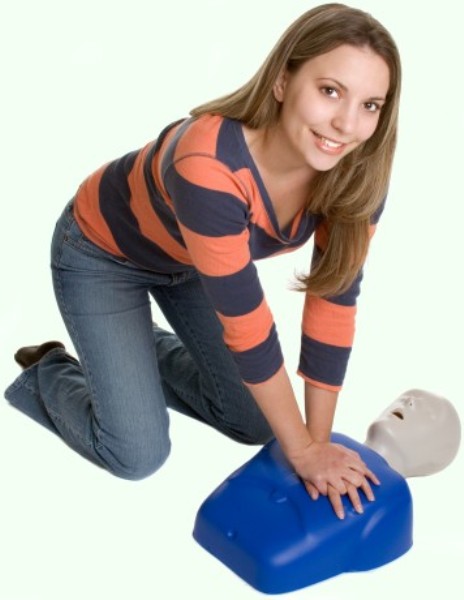
There are some basic first aid techniques with which we are all familiar and have them as a reflex. A lot of them have been imbibed by watching and imitating people around us. All of us know that a bleeding nose has to be pinched and ice pack has to be applied over a twisted ankle, while hot fomentation is needed for backache.
There are times when there is grave emergency and we find ourselves as the first rescuer. Some elementary first aid measures must be known to all, for it can be a matter of life and death. Before I discuss it further, I would like to underscore a very important point. One must always follow ‘Universal precautions’ in all stages to protect ourselves first. As diseases like HIV and Hepatitis are very common, following universal precautions is mandatory!
1. Cardiopulmonary Resuscitation (CPR):
This is a procedure that we all must acquaint ourselves. Anyone with Cardiac arrest is a candidate for CPR. If you see that a person has collapsed, just shake him/her up to enquire if s/he is ok. If on shouting and shaking the person is unresponsive, just start CPR at once! Don’t be afraid, because not doing it is more harmful than doing it. It ensures blood supply to the heart so that it can pump it to the vital organs. Lock your hands and lean over the chest of the causality and press, at speed of around 100 pushes/min, at the lower end of breast bone. Each compression must be of around 1.5-2 inch in depth. Simultaneously call for help. Techniques vary for pediatric ages.
2. Stop bleeding:
The golden rule is to elevate and apply pressure. Virtually any bleeding can be controlled by pressure. Irrigate the wound with water to wash off the foreign bodies and the infective organisms and apply pressure with gauze. Immediately shift the patient to a medical centre for tetanus injection and further management.
3. Low sugars:
One of the very common causes of collapse, is especially in diabetics after taking insulin and skipping the next meal. Hypoglycemia is more dangerous than hyperglycemia. So give the collapsed patient something sweet to chew or drink. This can be life saving as brain gets its energy only in the form of glucose.
4. Choking:
When you see someone who has a fish bone stuck in their food-pipe, go behind that person and with your arms around his/her chest apply a sudden pulling traction over the upper midline of abdomen. This force will help the grieved person to puke out the incriminated object. This is called Heimlich maneuver.
5. Heat stroke:
If on a hot sunny day, you spot a person dizzy and s/he looks dehydrated and breathing with air hunger, you probably are dealing with heat stroke. Remove most of the clothing for more ventilation and cover him/her with a sheet soaked in water. Sponge the person and apply ice. Immediately seek medical help for further management. Ice water lavage may be done in medical setup.
6. Hypothermia:
In cold chilly weathers, hypothermia is a common problem. Remember to cover the person for insulation and heat retention. Electrically heated blankets may be used. They may suffer from frostbite. Never warm the affected limb very quickly in frostbite.
7. Shock:
These people have very less blood pressure to meet perfusion demands of vital organs like brain, liver, kidney. It can have many underlying causes like infection (sepsis), blood loss (hypovolumia), heart arrest (cardiac cause) or neurological cause. But the importance is to recognize it and manage early. For example if you suspect a fracture, immobilize any limb which is suspected to be fractured. Fractured long bones can cause massive internal bleeding of upto 1.5-2 liters. So don’t tamper much with it. Practice LOG ROLLING to shift such people
8. Epi-pen:
Allergies can simply be a small rash with itching or can be severe enough to produce acute breathlessness due to inflammatory swelling of airway. This is called anaphylaxis and is fatal within minutes. Inject a shot of Epi-pen in such cases as it can be life saving and then seek for medical help.
9. Choked infant:
Clear the airway of any obvious foreign body. Place the infant prone over our arm, with head lower than the trunk and strike between the shoulder blades 5 times. Now shift the infant over other arm, so that s/he faces you. Now apply pressure at the lower end of breast bone with thumb 5 times. Repeat and immediately call for medical help.




